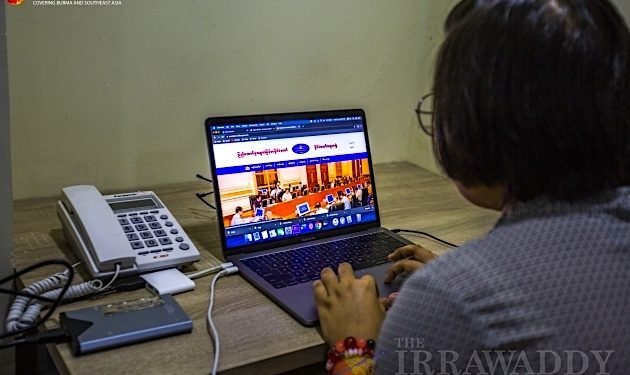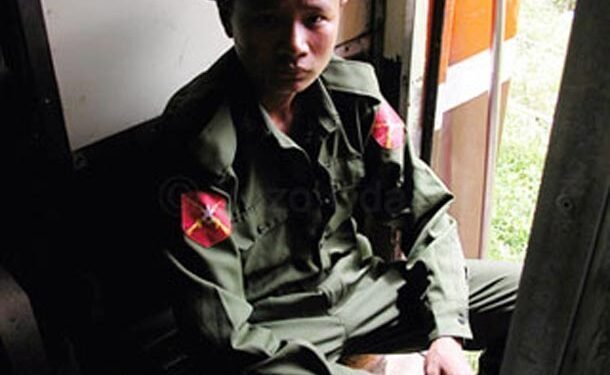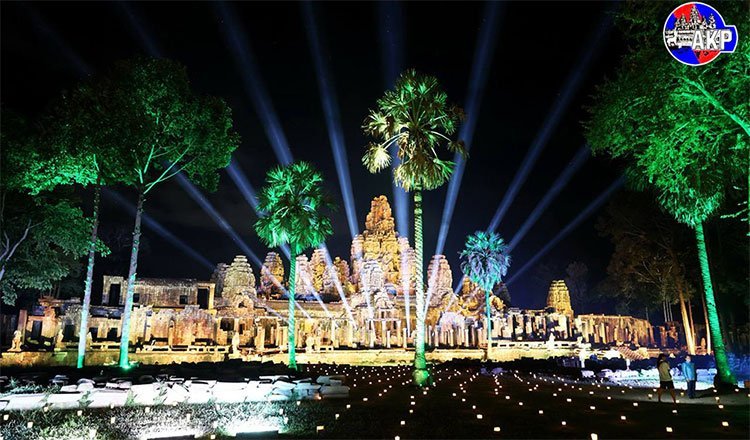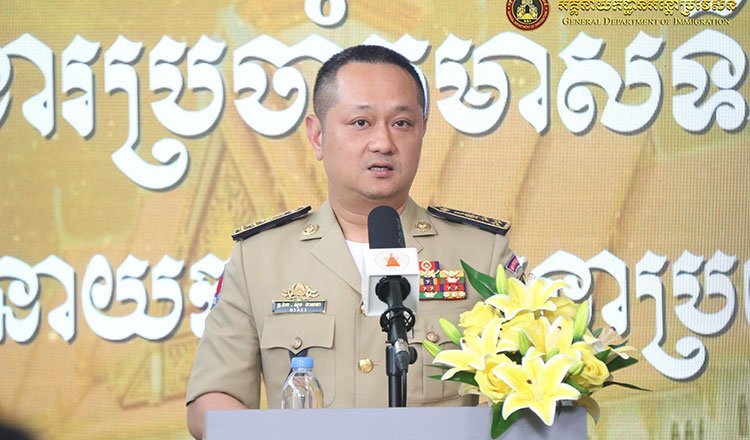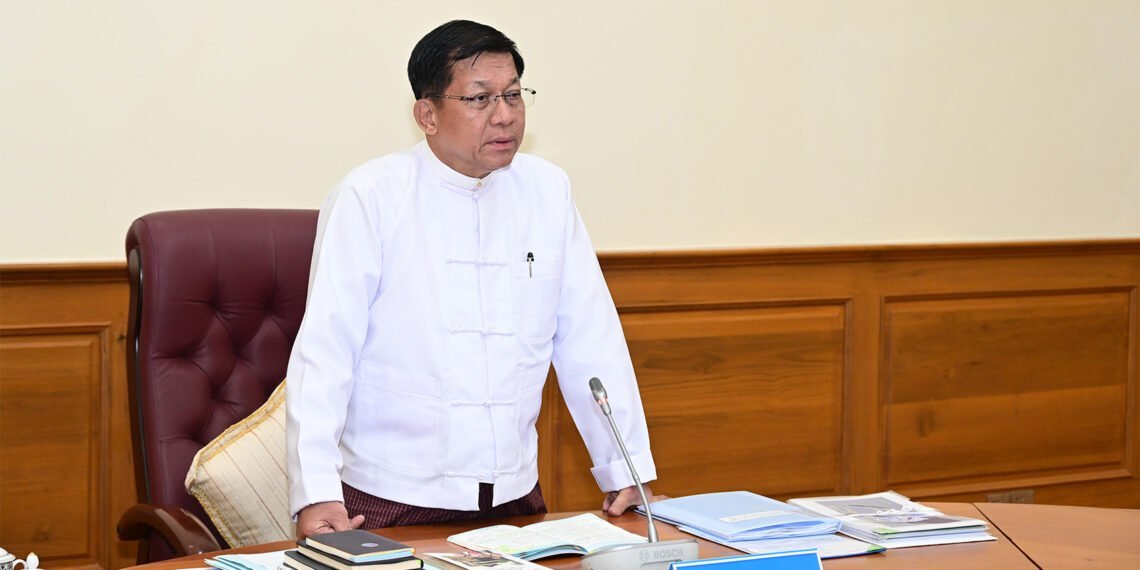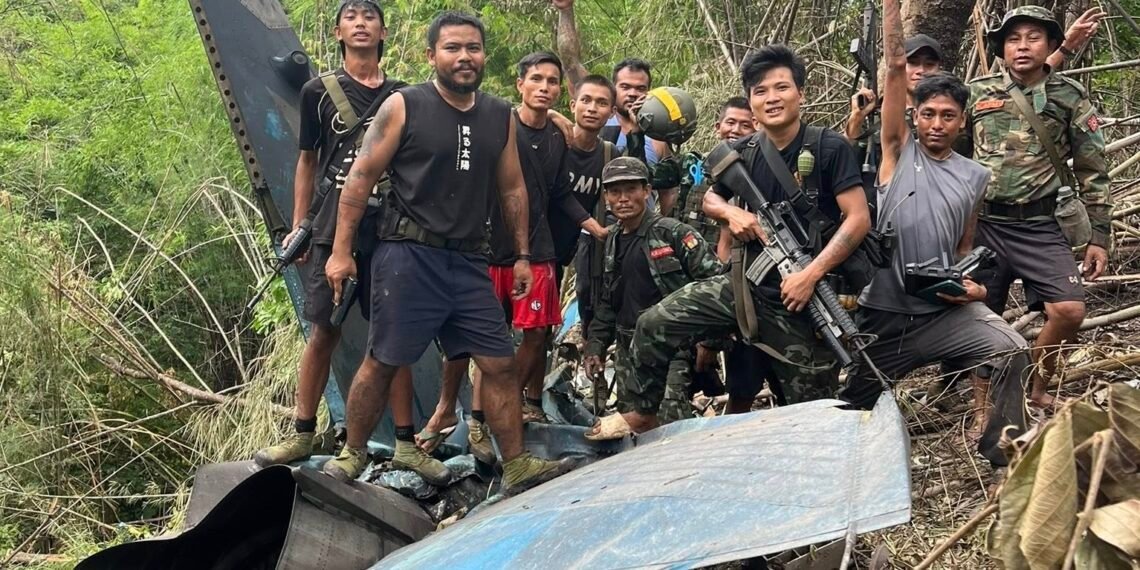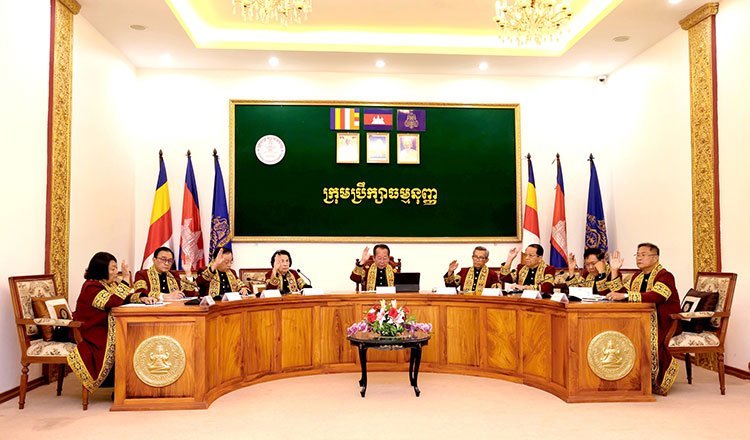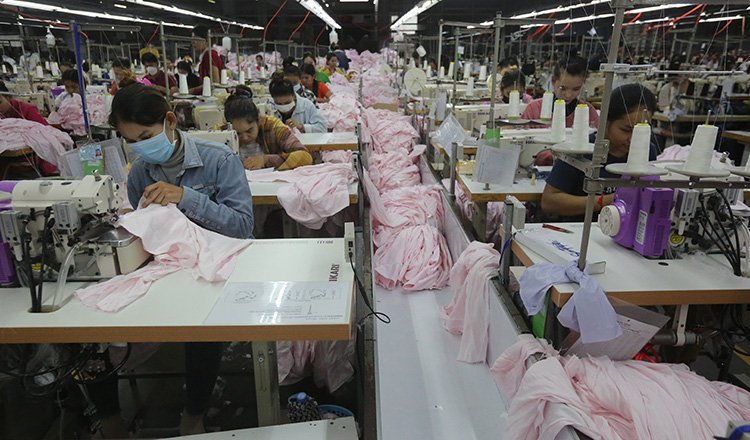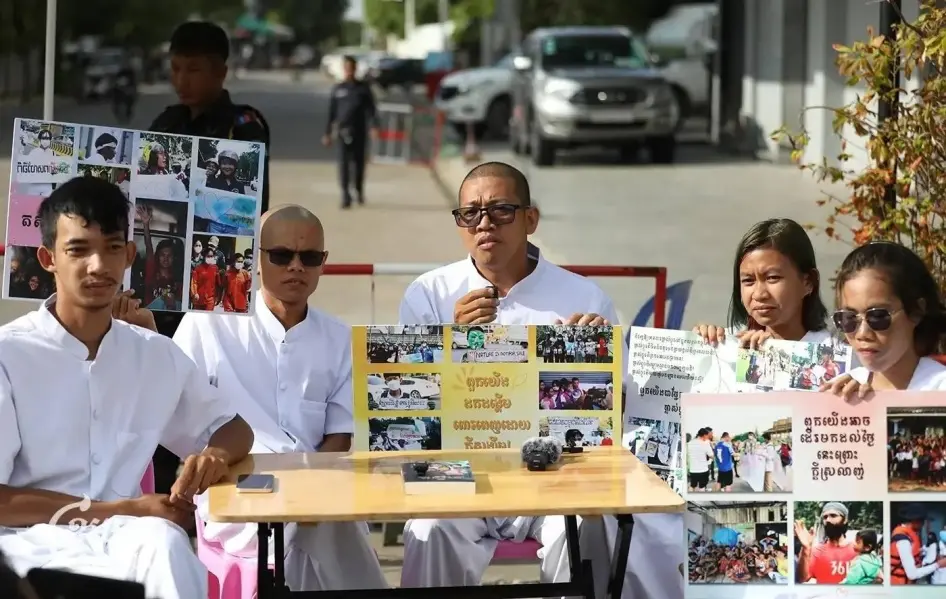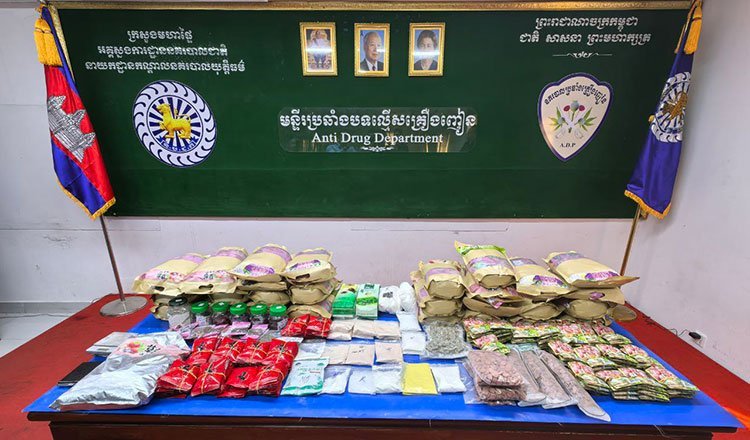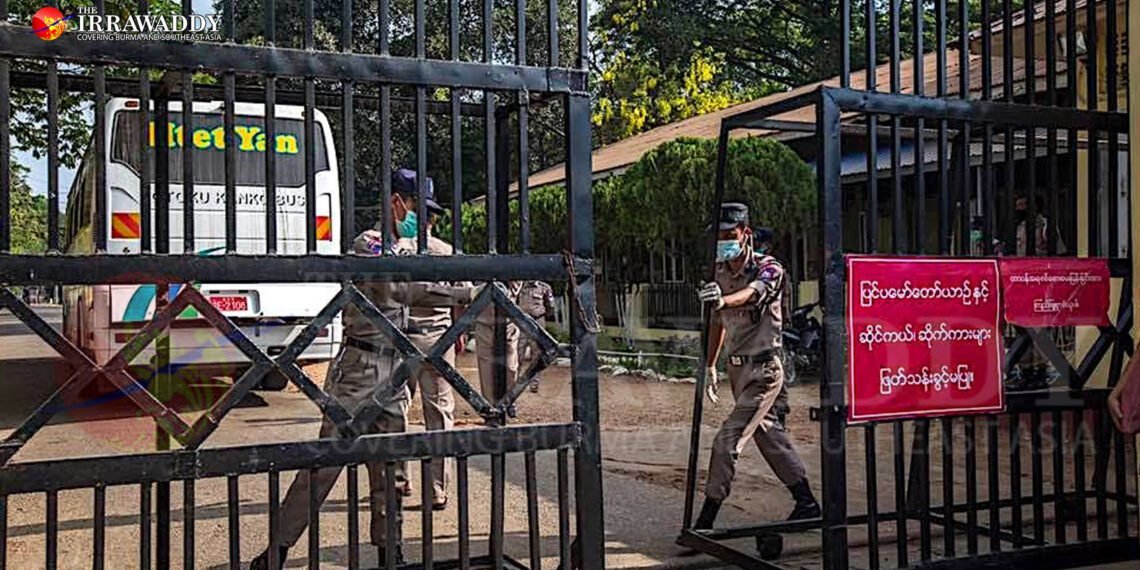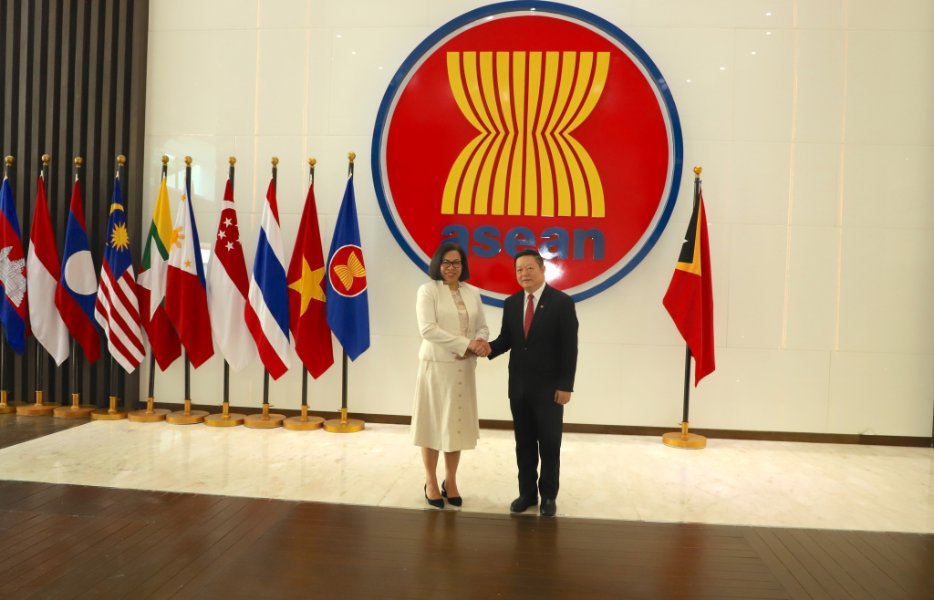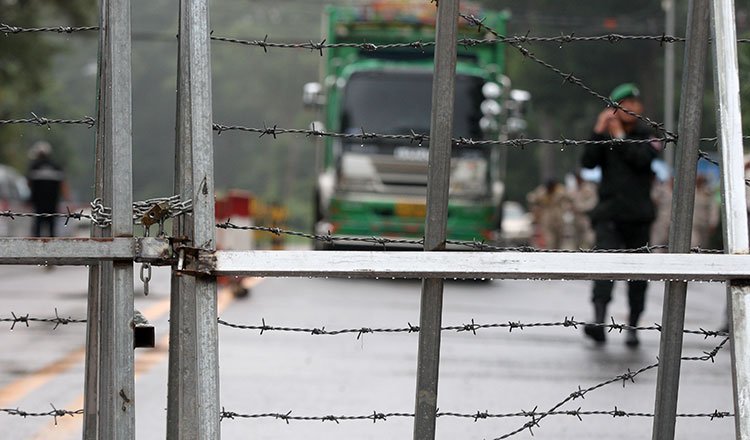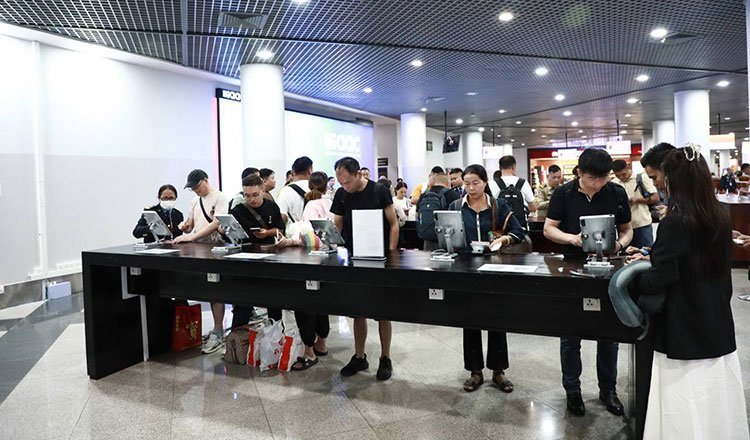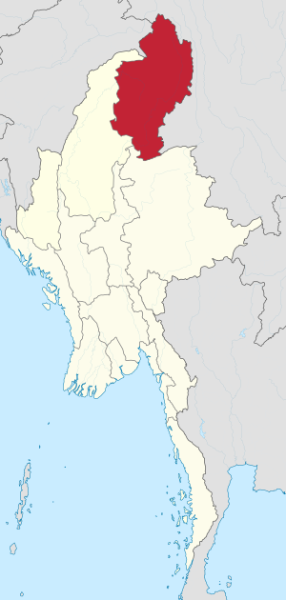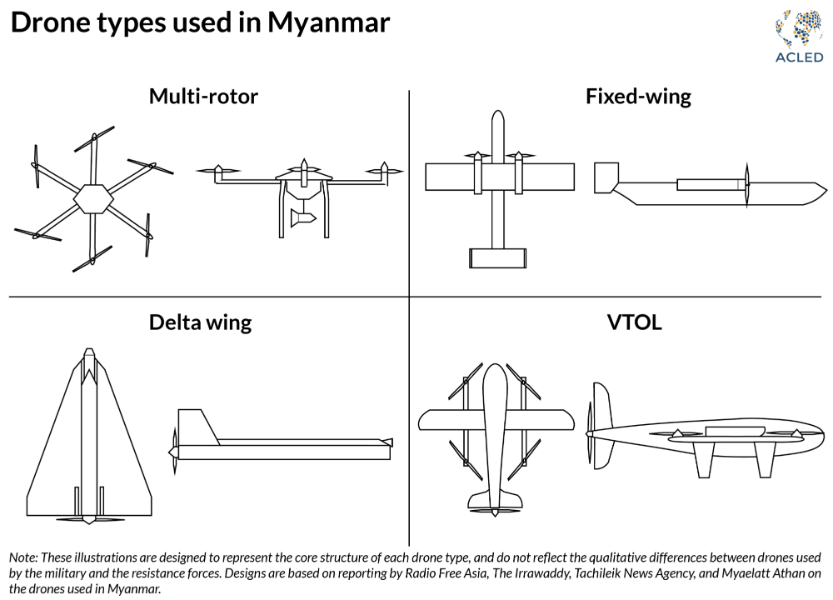-
Posts
15,793 -
Joined
-
Last visited
Content Type
Events
Forums
Downloads
Quizzes
Gallery
Blogs
Everything posted by geovalin
-
The Irrawaddy As Myanmar’s civil conflict grinds into its fourth year, the country’s digital landscape has fractured as dramatically as its political one. From rural payphones to illegal satellite links, people across the country are finding ingenious—and often risky—ways to stay connected in a nation sliding back into digital darkness. Once one of Southeast Asia’s fastest-growing mobile markets, Myanmar’s connectivity boom has been all but reversed since the 2021 military coup. The junta has banned popular social media platforms, shut down regional networks, and increasingly weaponised blackouts in its battle against a nationwide uprising. In government-held cities like Yangon, students use VPNs to bypass bans on Facebook, Instagram, WhatsApp and X—at great personal risk. “Security forces now check our phones,” said a 23-year-old student who spoke anonymously. “But we have to stay connected. This is how we fight back.” Meanwhile, in conflict zones like Karenni and Rakhine states, connectivity is scarce. In the delta town of Ponnagyun, one enterprising resident has turned back the clock—installing payphones linked to 10-metre antenna poles. “They don’t care how much it costs,” said operator Saw Thein Maung. “They just want to speak to their children.” Elsewhere, satellite systems offer a lifeline. In a makeshift internet café in eastern Myanmar, a smuggled Starlink terminal beams down global access. Though illegal under junta law, it has become a digital oasis for students, families and gamers alike. “We need to know what’s happening,” said owner Marino. Since the coup, Myanmar has seen nearly 400 regional internet shutdowns, according to the Myanmar Internet Project. The group warns that these disruptions are not just inconvenient—they’re undermining education, emergency services and livelihoods. What’s unfolding is what activists are calling a “digital coup”—a deliberate campaign to isolate citizens and control information. And yet, across cities and villages, people are resisting in any way they can. “We young people believe we can overcome restrictions,” said the Yangon student. “Even if they block us today, we’ll find another way tomorrow.”
-
- 1
-

-
The Irrawaddy, archive Myanmar’s military regime claims it has released 93 minors from its ranks, pushing back against a recent United Nations report accusing it of recruiting hundreds of children—many for combat. In a rare statement published on Friday in the junta’s state-run Global New Light of Myanmar, officials said a verification process conducted last year identified and discharged 93 underage recruits, each reportedly given financial support. Authorities added that only 18 suspected cases remain under review. The announcement comes in direct response to a damning UN report released in June, which found that Myanmar’s armed forces and allied militias recruited at least 467 boys and 15 girls in 2023—more than 370 of whom were deployed in combat roles. The junta’s statement did not specify when the 93 minors were released, raising questions about the timing and transparency of the process. While the UN report also cited child recruitment by anti-junta forces, the numbers on the military’s side were significantly higher. The worst violations reportedly took place in western Rakhine state, where 300 children—many Rohingya—were said to have been recruited by the military and its allies. Myanmar has been plunged into civil war since the 2021 coup that ousted Aung San Suu Kyi’s elected government. Armed resistance has spread nationwide, with ethnic groups and new militias gaining control of large parts of the country. In 2024, the junta enacted a mandatory conscription law to bolster its struggling forces, amid mounting territorial losses. UNICEF estimates that 3.5 million people are now displaced across Myanmar, over a third of them children. Reports of child soldiers, including some as young as 13, have drawn international condemnation and raised alarm over deepening rights abuses in conflict zones. Despite the junta’s latest claims, rights monitors remain sceptical. “Discharging a fraction of child soldiers does not erase the systemic nature of the recruitment,” said one international observer, speaking on condition of anonymity due to security concerns. With the conflict grinding on and oversight limited, the plight of children caught in Myanmar’s war shows no signs of easing. -2025-07-05
-
- 1
-

-
Siem Reap has earned a coveted spot on Tripadvisor’s 2025 Travellers’ Choice Awards Best of the Best list, placing 14th among the top 25 global destinations and reinforcing its reputation as Cambodia’s cultural crown jewel. The accolade celebrates destinations that have received consistently glowing reviews from travellers over the past year. According to Tripadvisor, fewer than 1 per cent of the platform’s 8 million listings make the cut. The recognition highlights Siem Reap’s enduring appeal, particularly as the gateway to the majestic Angkor Archaeological Park. “When the morning light washes over the overgrown temples and ruins of Angkor Wat, a simple Siem Reap sunrise becomes a profound event,” the travel site noted. Beyond the ancient temple complex, visitors are drawn to Siem Reap’s vibrant cultural life—ranging from the Cambodian Cultural Village to the bustling Angkor Night Market, where street food, craft stalls and lively bars provide a more modern flavour of the city. The 12th-century Angkor Thom royal city, situated within the wider Angkor complex, also remains a key highlight, offering a window into the grandeur of Khmer civilisation. Regionally, Siem Reap ranked 5th among Asian destinations, with Phnom Penh, Cambodia’s capital, coming in at 18th—an encouraging sign for the country’s broader tourism revival. Topping the global list this year was London, followed by Bali and Dubai. Siem Reap’s inclusion reflects not only its historical importance but also growing international appreciation for its unique blend of heritage, hospitality, and atmosphere. After years of pandemic disruption, Cambodia’s tourism sector is steadily rebounding, and this global recognition is likely to boost arrivals in the months ahead. With its ancient stones, warm smiles, and rich tapestry of tradition, Siem Reap continues to capture the imagination of travellers from across the world. -2025-07-05
-
- 1
-

-
GDI Cambodian immigration authorities say they have denied entry to over 1,200 foreigners and deported nearly 6,000 others in the first half of 2025, amid mounting concerns over illegal entry, scams, and unauthorised employment. The figures were released by the General Department of Immigration (GDI), which confirmed a sharp rise in immigration violations compared to last year. According to Lieutenant General Sok Veasna, Director General of the GDI, border authorities acted based on “clear criteria”, including invalid documents, suspicious travel histories, and vague or unverifiable travel purposes. “There are some cases where individuals could not clearly state their reasons for entering our country, their documents were not valid, or they had travel records that raised concerns,” said Lt Gen Veasna. Between January and June, almost 6,000 foreign nationals were deported, with the majority facing removal for illegal entry, overstaying their visas, or working in Cambodia without proper authorisation. A growing number, officials say, were linked to online scams or suspected criminal activities. The crackdown comes as Cambodia continues to battle a wave of illicit cybercrime operations—many involving foreign nationals—run out of scam compounds, particularly near border zones. Recent international scrutiny and media reports have drawn attention to the rise of human trafficking and forced labour linked to these operations. “We do not allow illegal border crossings,” Lt Gen Veasna stressed. “No country supports scams or allows its territory to become a haven for crime.” Authorities say the tighter enforcement is part of broader efforts to secure the country’s borders, protect public safety, and restore Cambodia’s international reputation, which has taken a hit over its association with transnational scam networks. “What matters is that we must find ways to prevent and deter foreigners attempting to enter Cambodia without proper documentation or illegally, to prevent problems occurring in the future,” Veasna added. The GDI has not named specific nationalities but is reportedly working with regional partners to improve border cooperation and intelligence sharing in response to the growing challenge. -2025-07-05
-
MoI Myanmar’s military leader Min Aung Hlaing has publicly rejected the World Bank’s prediction that the country’s economy will contract by 2.5% in 2025–26, claiming the assessment is “inaccurate and incomplete” despite growing domestic and international concerns over Myanmar’s economic collapse. Speaking at a National Economic Development Coordination Meeting on Wednesday, the junta chief insisted that Myanmar’s GDP would rise from $76.4 billion in 2024–25 to $81.6 billion in the coming financial year. He downplayed external analysis, saying, “Regardless of forecasts, if the people remain committed and hardworking, we can defy these expectations and achieve real GDP growth.” The World Bank’s June report projected economic shrinkage mainly due to the devastating 7.7-magnitude earthquake that struck in March, which caused an estimated $11 billion in damage—about 14% of GDP. The Bank cited factory closures, infrastructure damage, labour shortages, and disrupted supply chains as key obstacles to recovery. Min Aung Hlaing, who previously acknowledged 3.62 trillion kyats ($1.7 billion) in direct earthquake-related losses, dismissed the broader World Bank findings. The junta routinely rejects analyses by global organisations, including the UN, accusing them of bias and faulty data. However, on the ground, conditions tell a different story. Myanmar faces a mounting economic and humanitarian crisis. Ongoing civil conflict, rampant inflation, a plunging kyat, mass displacement, and power outages continue to paralyse daily life for millions. The junta’s promises of electric railways, stable exports, and modern agriculture remain unfulfilled more than four years after the 2021 coup. Social media users swiftly mocked Min Aung Hlaing’s growth forecast, with many suggesting the only real growth is in the fortunes of his inner circle. His son Aung Pyae Sone and daughter Khin Thiri Thet Mon, both under US sanctions, reportedly control vast business empires in sectors ranging from healthcare and construction to entertainment and telecoms. While Min Aung Hlaing paints an optimistic picture of economic resilience, international experts say Myanmar’s trajectory suggests deepening instability and hardship—with little sign of recovery on the horizon. -2025-07-04
-
maui A Myanmar military fighter jet has crashed in the conflict-ridden eastern state of Kayah, with anti-junta resistance forces claiming they shot it down during a fierce battle earlier this week. The Karenni Nationalities Defence Force (KNDF), a key ethnic resistance group, said its fighters brought down the aircraft on Wednesday near Hpasawng township, a remote area about 160km southeast of the capital, Naypyitaw. The wreckage, along with the bodies of two airmen, was reportedly discovered by Thursday morning. Photos and video footage shared by the KNDF and circulated on local media show the charred remains of what the group identified as a Chinese-made FTC-2000G ground-attack jet, with KNDF fighters posing at the site. While the junta has not confirmed the cause of the crash or the fate of the crew, state-run newspaper Myanma Alinn reported on Thursday that a military aircraft had disappeared from radar the previous evening during what it described as long-range training manoeuvres. The military attributed the disappearance to possible technical failure or weather-related issues, without disclosing the jet type or crew status. The KNDF claims the plane was heading towards their positions to launch an airstrike, just days after the group captured a junta infantry base in the same township. According to spokesperson Tar El Soe, the KNDF had stationed heavy machine guns in anticipation of such attacks. If confirmed, this would mark the third fighter jet the Karenni resistance claims to have downed since the military coup in 2021. The junta is believed to have lost at least nine aircraft, including helicopters and fixed-wing fighters, since Myanmar’s civil war escalated following the February 2021 military takeover. Kayah State, home to the Karenni ethnic minority and bordering Thailand, has become one of the fiercest battlegrounds in the conflict. The junta has increasingly relied on air power to compensate for losses on the ground, using Chinese and Russian-made aircraft against rebel-held areas. Meanwhile, resistance groups, though poorly equipped, have adapted tactics and weaponry to target the military’s aerial advantage. The incident underscores the growing capabilities of Myanmar’s armed resistance—and the deepening vulnerability of a regime locked in a grinding, multi-front war. -2025-07-04
- 1 reply
-
- 1
-

-
CCC Cambodia’s government is pushing ahead with a constitutional amendment that would allow the state to revoke the citizenship of any citizen found conspiring with foreign powers against national interests—a move that has drawn strong reactions both at home and abroad. Prime Minister Hun Manet, speaking on 3 July at a ceremony in Kampong Thom province, dismissed fears over the amendment, saying only those seeking to harm Cambodia should be concerned. “If you are truly patriotic, you have nothing to fear,” he said. “But if you’re working with foreign forces to destroy the country, then you should be afraid—and you should not be Cambodian.” The initiative, backed unanimously by all 125 members of the National Assembly and the government, has already been submitted to King Norodom Sihamoni. The Constitutional Council has confirmed the request may proceed, paving the way for a parliamentary vote on 11 July. The proposed change would amend Article 33 of the Constitution, which currently forbids the state from stripping Cambodian citizenship, deporting citizens, or extraditing them without mutual agreement. The government argues the revision is in line with global norms, citing research that 150 countries—including the US, UK, and 18 EU states—have similar laws. Senate President Hun Sen, who is spearheading the campaign alongside his son, made it clear the amendment is a direct response to activities by overseas opposition figures. He accused them of plotting with foreign powers to undermine Cambodia, particularly amid growing tensions with Thailand over contested border areas. The move follows Cambodia’s submission of border documents to the International Court of Justice (ICJ) concerning disputed temple sites where a Cambodian soldier was recently killed. Hun Sen said the legal change is necessary to prevent such disputes being exploited by opposition voices to weaken national unity. However, legal experts have raised concerns. Prominent lawyer Sok Sam Oeun warned that the amendment could be used to silence dissent rather than defend national sovereignty. “Even without this change, the courts can already strip political rights,” he said, calling the proposal more political than practical. While the government insists the move aligns with international standards, critics say it risks deepening divisions and setting a dangerous precedent in a country where opposition space is already tightly controlled. -2025-07-04
-

US Tariff Uncertainty Threatens Cambodia’s Garment Industry
geovalin posted a topic in Cambodia News
KT Sokunthea Cambodia’s vital garment sector is facing short-term disruption, with nearly half of factories uncertain about their operations beyond the next three months, according to a new industry survey. Mounting concern over US tariff policies and faltering buyer confidence is placing unprecedented pressure on the country’s top export earner. The survey, published on 27 June by Better Factories Cambodia (BFC), in partnership with the ILO and the International Finance Corporation, found that while most factories still have short-term orders, 44% said they could only maintain current operations for another three months. Around 15% have no confirmed orders or only enough for the coming weeks. Conducted among 203 factories, the findings paint a cautious but concerning picture. While over half reported confirmed orders through to the end of the year, many buyers are holding off on longer-term commitments due to uncertainty over US tariffs. The United States remains Cambodia’s most important trading partner—absorbing over 91% of garment exports in early 2025—yet it also imposes the region’s highest reciprocal tariff, at 49%. Ken Loo, Secretary General of the Textile, Apparel, Footwear and Travel Goods Association of Cambodia, confirmed that buyer hesitation is linked to uncertainty in Washington. “Many buyers have not placed orders for the later part of the year,” he said. “They are waiting for more certainty regarding the US tariffs.” Workers, too, are bracing for impact. Yang Sophorn, President of the Cambodian Alliance of Trade Unions, warned that stalled negotiations could lead to closures and job losses. “It will impact workers directly and indirectly,” she said. “Some factories may shut down or relocate.” The sector, which employed over 918,000 Cambodians in 2024 and exported $13.6 billion worth of goods, is also facing a labour shortage. Sophorn noted that some factories are struggling to retain skilled workers, as employees seek better pay and conditions elsewhere. To adapt, 26% of surveyed factories are seeking new customers outside the US. Others are investing in automation, enhancing worker training, and expanding recruitment in a bid to stay afloat. Despite current headwinds, many factories remain cautiously optimistic. But with tariff negotiations in limbo and global demand faltering, the months ahead may prove decisive for Cambodia’s most critical industry. -2025-07-04 -
Five Mother Nature activists, from left to right Ly Chandaravuth, Thun Ratha, Yim Leanghy, Phuon Keoraksmey, and Long Kunthea, recording a podcast outside the court in Phnom Penh, Cambodia, June 11, 2024. © 2024 Private HRW PHNOM PENH — A year after their imprisonment, five young Cambodian environmental activists from the group Mother Nature remain behind bars on what rights groups call baseless charges of plotting against the state and insulting the monarchy. On 2 July 2024, ten members of the award-winning youth-led organisation were convicted in a case widely condemned by international observers. Five were immediately jailed, while four were tried in absentia and one, a Spanish national, had been deported years earlier. Human Rights Watch marked the grim anniversary on Tuesday by calling for the activists’ “immediate and unconditional” release, accusing the Cambodian government of criminalising peaceful environmental work. “These harsh sentences show the government’s disregard for both free expression and environmental protection,” said Bryony Lau, deputy Asia director at Human Rights Watch. The five jailed activists – Thun Ratha, Ly Chandaravuth, Phuon Keoraksmey, Yim Leanghy, and Long Kunthea – were sent to prisons in remote provinces, far from their families and legal support. All are serving six- to eight-year sentences, with some not due for release until 2032. Mother Nature has long been a thorn in the government’s side. The group has exposed illegal sand exports, deforestation, and corruption tied to large infrastructure projects. In 2023, it was awarded the prestigious Right Livelihood Award for its fearless activism, which has resonated with Cambodia’s youth. But since the crackdown, the space for environmental defenders has grown even smaller. Journalists reporting on similar issues have also come under pressure. British journalist Gerald Flynn was banned from re-entering Cambodia in January, allegedly in retaliation for his work on illegal logging. In May, Cambodian reporter Ouk Mao was arrested and detained without a warrant after investigating forest clearance in Stung Treng. He was later released on bail but still faces multiple charges. UN experts and rights groups warn that Cambodia’s continued targeting of environmental voices is eroding both civic freedoms and long-term environmental protection. “The message is clear,” said Lau. “Speak out to protect the environment, and you risk prison. That’s not just a blow to these activists—it’s a blow to Cambodia’s future.” -2025-07-03
-
- 1
-

-
ADP PHNOM PENH — Cambodia’s anti-drug crackdown is intensifying, with authorities detaining 12,728 suspects and seizing more than 1.46 tonnes of narcotics in the first half of 2025, according to an official report released on Wednesday. The figures mark an 8% rise in arrests compared to the same period last year. Among those detained were 304 foreigners, including 29 women, according to the Anti-Drug Department (ADP). Police also confiscated 366 kilograms of dried marijuana, over 12,000 fresh cannabis plants, and 546 kilograms of drug-making ingredients. Weapons and vehicles were seized as well — including 32 pistols, 15 rifles, over 1,200 motorcycles, and 102 cars — alongside mobile phones, weighing scales, and large sums of cash. The haul featured a wide range of illicit substances, including ketamine, heroin, cocaine, ecstasy, and various forms of methamphetamine. The ADP report coincided with an ongoing high-profile trial in Phnom Penh. Six people — including four women — are facing life imprisonment for allegedly trafficking nearly 200 kilograms of hard drugs from Laos into Cambodia. Prosecutors say the suspects smuggled ketamine, heroin, and crystal meth from the Lao border in Stung Treng province to the capital’s Chroy Changvar district. The alleged ringleader, Ly Bunmin, 51, and his son Ly Ming, 24, were named in court proceedings, alongside Bun Navy, Bun Malis, Suy Chhenglang, and Kes Srey Penh. Police seized three cars, over $300,000 in bank assets, and five condominium units linked to the group during raids in January. All six face charges under Cambodia’s anti-drug and anti-money laundering laws. Four have admitted guilt and appealed for reduced sentences. A verdict is expected on 11 July. Cambodia has no death penalty, but anyone convicted of trafficking over 80 grams of illicit drugs may face life in prison. As the scale of seizures and prosecutions grows, authorities say they remain committed to dismantling transnational drug networks operating within the country. -2025-07-03
-
The Irrawaddy An Indonesian travel influencer has been sentenced to seven years in a Myanmar prison after meeting with anti-junta rebels during an unauthorised trip through the war-torn country, Indonesia’s foreign ministry confirmed on Tuesday. The 33-year-old man, identified only by the initials A.P., was arrested in December and convicted under Myanmar’s laws on terrorism, immigration, and unlawful association. Authorities said he entered the country illegally and held meetings with groups the junta classifies as terrorist organisations. “He was sentenced to seven years after a court process in Myanmar,” said Judha Nugraha, Director of Citizen Protection at Indonesia’s foreign ministry. A.P. is currently held in Yangon’s notorious Insein Prison. According to reports, the influencer had documented his journey through Myanmar in late 2024 via social media posts, including photos alongside armed resistance fighters opposing the military regime. Other posts on his Instagram showed a blend of warzone adventures and high-end holidays in places like Paris and Bali. Myanmar has been locked in civil conflict since the 2021 military coup, with the junta facing growing resistance from ethnic armed groups and pro-democracy forces. The military has recently suffered significant battlefield losses, forcing it to implement conscription amid manpower shortages. The Indonesian government has not contested the conviction but is now supporting the man’s family in a plea for clemency. “We are facilitating a request for clemency,” Nugraha said. The case highlights the risks faced by foreign nationals engaging with groups opposed to Myanmar’s military rulers. It also underscores the junta’s hardening stance as it tries to contain widespread resistance after more than four years of internal war. Whether clemency will be granted remains uncertain. For now, A.P. joins thousands of others caught in Myanmar’s sweeping security dragnet—this time, with a high-profile social media trail that may have sealed his fate. -2025-07-03
-
Wiki Myanmar’s junta has formally opposed Timor Leste’s accession to ASEAN, warning that the tiny nation’s ties with resistance forces violate the bloc’s founding principles and must be addressed before membership can proceed. In a letter sent to Malaysia, the current ASEAN chair, the military regime in Naypyitaw accused Timor Leste of breaching the core ASEAN principle of non-interference by engaging with Myanmar’s shadow government and resistance groups. The junta singled out the National Unity Government (NUG), which it considers illegitimate, as a red line. The letter, signed by Han Win Aung, director-general at Myanmar’s foreign ministry, called on ASEAN to “suspend all related procedural considerations” regarding Timor Leste’s admission until it “rectifies its policy” on Myanmar. The tone was unusually blunt, asserting that Timor Leste’s current approach should lead ASEAN to “firmly reject” its membership. The objection throws a wrench into ASEAN’s plan, agreed at a May summit, to welcome Timor Leste as its 11th member during the upcoming leaders’ meeting in October. That announcement had marked a milestone for the Southeast Asian bloc’s long-delayed expansion. Timor Leste, which gained independence from Indonesia in 2002, has lobbied for ASEAN membership for over a decade. But its recent outreach to Myanmar’s opposition—particularly a video call in May between the Malaysian prime minister and NUG leaders—has clearly rattled the junta. The row highlights a growing fault line within ASEAN, which has struggled to deal with the fallout of Myanmar’s 2021 coup. While some members, notably Malaysia and Indonesia, have taken a tougher stance, others remain wary of provoking further division. ASEAN now faces a delicate balancing act. With foreign ministers due to meet from 9–11 July, the chair will need to navigate Myanmar’s defiance without derailing Timor Leste’s long-awaited entry. For now, Timor Leste’s ASEAN dream hangs in the balance—held hostage, it seems, to a crisis far beyond its borders. -2025-07-03
-
- 1
-

-
KT, Sokunthea Cambodian Prime Minister Hun Manet has declared that his government is ready to resolve the ongoing border crisis with Thailand — but only when a Thai leader with “real power” is at the table. Speaking on 1 July during National Fish Day celebrations in Takeo province, the premier took aim at what he described as Thailand’s lack of clear leadership amid growing friction between the two countries. His remarks came as 1.5 million fish were released into the Tonle Sap Lake, but the focus quickly turned to the simmering diplomatic row. “We are not playing games,” Hun Manet said. “In Cambodia, we don’t have conflicting voices or four people issuing four different letters. We are waiting for someone with the legitimate authority to open or close border checkpoints.” Tensions flared after Thailand shut its land borders with Cambodia in early June, prompting Phnom Penh to impose reciprocal closures. Since then, both sides have boosted their military presence along the frontier, and efforts to initiate dialogue have repeatedly stalled. The Cambodian premier cast doubt on Thailand’s political coherence, pointing to contradictory statements from Thai officials regarding border policy. He suggested the now-suspended Thai Prime Minister Paetongtarn Shinawatra lacks the authority to control the military or make binding decisions. “In Cambodia, the chain of command is clear,” Hun Manet said. “Political decisions rest with the prime minister. When I give an order, it is not a joke.” He reiterated that military-level talks would only be possible once all border crossings are fully reopened, highlighting Cambodia’s consistent position throughout the dispute. With both nations entrenched and trust eroding, Hun Manet’s comments signal Phnom Penh’s firm stance: no talks until Bangkok can speak with one voice — and from the top. -2025-07-02
-
MoI Cambodia has officially rolled out its new v-Pass system, replacing traditional passport stamps and QR code slips for all foreign visitors, as part of a sweeping digital upgrade to its immigration process. From 1 July 2025, the v-Pass becomes mandatory at all international airports and seaports, following an 18-month trial that began in January 2024. Under the new system, visitors will no longer receive inked entry or exit stamps in their passports. Instead, a digital visitor pass will be emailed to each traveller after clearing immigration. The Ministry of Interior’s General Department of Immigration says the reform is aimed at modernising border control, cutting paperwork, and supporting Cambodia’s broader digital economic policy. Travellers entering Cambodia now need only present their passport. Once processed by an immigration officer, their v-Pass is automatically generated and sent by email — no more stamping, no more slips. Authorities advise keeping the v-Pass accessible throughout your stay, either on a mobile device or in printed form, as it may be required for verification. On departure, visitors again present their passport, with exit details logged electronically. As with entry, no physical stamp is issued. The new system can be accessed via email, Cambodia’s official e-Arrival website (arrival.gov.kh), or the Cambodia e-Arrival app. It forms part of a broader shift towards paperless, tech-enabled services across government departments. For frequent visitors and first-time tourists alike, the change marks a significant step away from the traditional travel experience — one that may become increasingly common across the region. -2025-07-02
-
Wiki The United States is backing the wrong horse in Myanmar — and it may be costing both peace and critical minerals. Despite years of brutal conflict and failed peace plans, Washington remains committed to a unified Myanmar, supporting democratic transition within its current borders. But a new analysis argues this position is both strategically misguided and statistically doomed. According to experts Robert S. Burrell and Chris Mason, Myanmar’s civil war — now the world’s longest — is unwinnable under present conditions. Deeply fractured by history, ethnic divides, and mutual distrust, Myanmar is not a cohesive state but a patchwork of warring nations. Attempts to hold it together, they argue, are prolonging bloodshed and bolstering China’s grip on vital rare earth minerals. Central to this argument is Kachin State, a resource-rich region in Myanmar’s far north. Home to the Kachin Independence Army (KIA), which controls swathes of territory and key trade routes into China, the state is fast becoming a geopolitical flashpoint. Despite the chaos, Kachin remains the world’s third-largest source of rare earths — crucial components in everything from mobile phones to military hardware. Right now, China is extracting those minerals through illegal mines, funnelling profits across the border while leaving Kachin’s environment and people ravaged. But the tide is turning. In early 2024, the KIA captured dozens of junta positions and now oversees much of the rare earth flow — yet earns a fraction of its value. China, in response, has shut down cross-border trade and staged military drills as a show of force. The authors argue the US should recognise the inevitable: Myanmar is breaking apart, and clinging to its outdated borders serves no one — except China. Instead, they call for bold support for Kachin independence, echoing the break-up of Yugoslavia as a model. Such a shift would not only align with local desires for self-determination but also disrupt China’s near-monopoly on rare earths. For decades, the Kachin have harboured strong pro-US sentiment, rooted in WWII-era alliances. The opportunity, the authors say, is clear: the US must abandon its flawed support for an artificial state and back a new, independent Kachin — before China locks in its dominance for good. -2025-07-02
-
RFA Myanmar’s civil war is entering a new phase — one where drones, not fighter jets, are shaping the conflict from above. Once dominated by the military’s ageing fleet of helicopters and jets, aerial warfare in Myanmar has undergone a radical shift. Over the past year, both the junta and resistance forces have turned to drones, making the country the world’s third-most active drone warzone, after Ukraine and Russia. What began as a guerrilla tactic by post-coup resistance fighters — modifying commercial drones to drop homemade explosives — has evolved into a game-changing strategy. More than 2,100 drone strike incidents have been recorded since 2021, targeting military bases, airfields, convoys and even senior commanders. Resistance forces now operate with specialised drone units like Federal Wings and Cloud Wings, coordinating attacks from improvised air forces. In April 2024, kamikaze drones struck the regime’s airbase and military HQ in Nay Pyi Taw. Just days later, drones targeted a stadium and helicopter unit during a visit by the military’s deputy chief. By November, resistance groups had damaged jets and bomb factories in a complex 24-drone raid on Meiktila — a strike that took a year to plan. These attacks haven’t just inflicted damage — they’ve reshaped morale. Troops now face a near-constant aerial threat, including psychological pressure from unarmed drones buzzing overhead. But the military is adapting. Once slow to embrace drone warfare, the regime is now investing heavily in its own fleet, supplementing its air force with drones and even paramotors — low-flying, powered gliders used for bomb drops and assaults. Since December 2024, paramotors have been recorded in over 120 operations. Despite air superiority, the junta’s ground power is crumbling. Desertions are up, conscription is faltering, and fuel shortages are biting. In response, drones offer a cheaper, deadlier alternative — one that doesn't rely on an increasingly reluctant human force. As Myanmar’s skies grow ever more crowded with drones, the balance of power is no longer decided by altitude, but by innovation — and both sides know the war from above could define the battle on the ground. -2025-07-02
-
- 1
-

-
thefederal.com As Myanmar’s Rakhine State descends deeper into conflict, India finds itself in a precarious balancing act — courting strategic interests while navigating a volatile warzone. The recent intensification of fighting between the Myanmar military and the powerful Arakan Army has redrawn control lines across the western state. For India, which has long viewed Rakhine as a gateway to Southeast Asia, the situation poses a diplomatic and security dilemma. On one hand, India has invested heavily in the Kaladan Multi-Modal Transit Transport Project — a flagship initiative linking its northeast to Myanmar’s Sittwe Port via Mizoram. But the port now sits in contested territory. The Arakan Army, which has made sweeping territorial gains in recent months, has warned foreign governments against engaging with the junta without their consent. At the same time, India is under pressure to maintain ties with Naypyidaw’s military regime, still the official government in diplomatic terms. The result is a classic case of “hunting with the hounds and swimming with the crocodiles,” as India attempts to hedge its bets in a theatre of growing geopolitical risk. New Delhi's cautious engagement reflects broader regional concerns. China, too, has deep interests in Rakhine — and a stronger Arakan Army presents a potential buffer to Beijing’s growing dominance, while also complicating India’s own plans. Adding to the complexity is the humanitarian crisis unfolding in Rakhine. The Rohingya issue remains unresolved, and the latest wave of violence is displacing thousands more, further destabilising the region. For India, which has faced criticism for its treatment of Rohingya refugees, the crisis presents reputational and ethical challenges. Analysts say India will need to adopt a more flexible, decentralised strategy — one that engages not just Naypyidaw, but emerging actors like the Arakan Army. Without that, its investments risk becoming stranded assets, and its influence in Myanmar could fade as new power structures emerge. In Rakhine, there are no easy allies — only shifting frontlines and uncertain loyalties. For India, walking that line may prove its most difficult regional test yet. -2025-07-01
-
New Light of Myanmar Yangon Region is set to gain a major employment boost as eight new businesses — backed by foreign investment — have been approved to operate in the industrial sector, creating jobs for nearly 6,800 people. The Yangon Region Investment Committee (YRIC) confirmed that six of the new enterprises are fully foreign-owned, while two are joint ventures. Combined, they represent a total investment of just under US$7.8 million. Approved during the committee’s June meeting, the businesses will focus largely on garment and industrial manufacturing, operating under the popular “cut, make, and pack” (CMP) model — a cornerstone of Myanmar’s export-driven textile sector. “This approval reflects our effort to bring job opportunities to the region,” a YRIC official stated, noting that the committee not only greenlit new projects, but also allowed for increases in investment and workforce size at existing operations. The push comes as Myanmar’s economy continues to struggle under political instability and global sanctions, with job creation seen as a crucial tool for maintaining social stability in urban centres like Yangon. The government has been keen to highlight its continued openness to foreign capital, despite international concerns about the country’s broader investment climate. YRIC says it reviews investment proposals from both local and foreign stakeholders on a monthly basis, aiming to stimulate industrial growth and employment under existing legal frameworks. For many in Yangon — particularly workers in the garment sector — the latest announcement offers a glimmer of economic hope in uncertain times.
- 1 reply
-
- 1
-

-
KT Cambodia’s garment and footwear workers are bracing for economic hardship following a sharp rise in US tariffs, fearing the fallout could cost them their jobs and worsen already fragile working conditions. The 49% tariff increase — announced under the renewed trade policy of former US President Donald Trump — has alarmed unions and labour advocates in the country, where nearly one million workers depend on the export-driven textile industry for their livelihoods. At a recent forum titled “A Unified Voice for Economic Justice”, held by the Workers’ Information Center in Phnom Penh, campaigners warned that the tariff shock threatens to undermine years of economic progress. Sot Sophorng, a researcher with the centre, said the announcement was “shocking and worrying,” and could expose workers to greater exploitation as factories scramble to absorb the financial hit. “Without immediate protection measures, this could push hundreds of thousands of Cambodians into worsening conditions,” he said. “It’s not just about wages — it’s about the entire wellbeing and future of these workers.” Cambodia exported nearly $14 billion in garments, footwear, textiles, and travel goods to international markets in 2024 — a 23% rise from the previous year. The vast majority of these exports head to the United States, making the country’s trade policy a decisive factor in Cambodia’s economic stability. There are currently more than 1,500 factories operating in the country’s garment sector, employing close to a million workers — most of them women from rural areas. Khun Tharo, a programme manager at labour rights group CENTRAL, said the long-term risks to job security are real if trade negotiations with Washington stall. “No country in this sector has yet reached a trade deal with the US,” Tharo posted online. “But Vietnam may soon enjoy better conditions than Cambodia — and that’s a concern.” Minimum wage increases in the sector have failed to keep pace with inflation, and activists warn that workers — especially in informal settings — could become more vulnerable to underpayment and abuse. As the Cambodian government navigates tense trade discussions, many fear that without urgent action, the human cost of this tariff hike will be paid by the country’s most precarious workers. -2025-07-01
- 1 reply
-
- 1
-

-
© PRIDE Fest Cambodia Rain couldn't wash away the colour or conviction from Phnom Penh’s riverside this weekend, as thousands turned out for PRIDE Fest 2025 — Cambodia’s largest-ever celebration of LGBTIQ+ rights. Despite a thunderstorm sweeping across the capital, the mood was defiant and electric. Rainbow flags flew high, music pounded through the downpour, and dancers glittered in defiance of the storm — an apt metaphor for a movement long weathering adversity. “This is no longer hidden behind closed doors,” said Nack Athens, founder of Pride Fest Cambodia. “We’re here, we’re visible, and we’re not going back.” What began as small, private gatherings in the early 2000s has evolved into a vibrant national celebration. PRIDE Fest, supported this year by UN Human Rights and other UN agencies, has become a vital platform for visibility, resilience, and advocacy for Cambodia’s LGBTIQ+ community. Yet the celebrations nearly didn’t happen. In 2024, longstanding sponsors pulled out, and the future of PRIDE was in doubt. Only a last-minute intervention by UN Human Rights saved the event. “Human rights don’t wait,” said Benjamin Moreau, deputy head of the UN office in Cambodia. Athens described the UN’s support as a turning point, saying it offered not just resources but legitimacy — emboldening other institutions to stand behind the cause. The festival’s reach now spans provinces, with inclusive events such as drag contests, fashion shows, and the joyful Pride Walk drawing thousands. But beneath the celebration lies a deeper push for equal rights. Cambodia does not criminalise same-sex relationships, yet legal protections remain thin. Marriage equality remains out of reach, and LGBTIQ+ people often face discrimination, especially online. Still, there is momentum. During Cambodia’s 2024 UN human rights review, the government accepted 12 LGBTIQ+-related recommendations — a sign, advocates say, of real if gradual change. “There’s a long way to go,” said Pisey Ly of Rainbow Community Kampuchea. “But acceptance is growing. We’re being seen — and heard.” From rainbow-draped tuk-tuks to packed public squares, PRIDE Fest 2025 marked more than a party. It was a declaration: Cambodia is on the path, however uneven, towards dignity and equality for all. -2025-07-01
-
- 2
-

-
KTAim Valinda The Cambodian government has unveiled a bold new strategy to revitalise the ancient Sambor Prei Kuk temple complex, aiming to turn the UNESCO World Heritage Site into a premier cultural destination that boosts local tourism and economic development. Deputy Prime Minister Vongsey Vissoth, who chairs the project, announced a series of sweeping measures during a high-level meeting on Friday. Among them are the creation of a dedicated visitor information centre, enhanced infrastructure, and a fresh rebranding campaign to give the site a more distinctive and memorable identity. “The goal is to transform Sambor Prei Kuk into a model tourism hub — one that not only draws visitors but also benefits the local community,” Vissoth said. He urged agencies to coordinate efforts on everything from improving road access and internet connectivity to building human capital through training in hospitality and culinary services. Located in Kampong Thom province, the temple complex was once a capital of the Chenla Kingdom and contains some of Cambodia’s oldest stone structures. Though recognised internationally for its historical significance, Sambor Prei Kuk has long struggled to attract the same numbers as Angkor Wat. Officials hope the planned improvements will change that. The proposed information centre will screen historical documentaries, while new signage, parking and support facilities aim to enhance the visitor experience. Authorities also highlighted the need for sustainable development and responsible investment that preserves the site's archaeological integrity. Phan Nady, Director General of the Sambor Prei Kuk National Authority, said expert consultation remains essential. “All projects, including the new bypass road, are guided by heritage experts to ensure no harm comes to the temple foundations,” he noted. Many smaller, unrestored temples within the complex remain buried, he added, and their conservation will form part of the next phase of development. The Council of Ministers confirmed that the initiative will follow a six-pronged plan focused on product development, promotion, training, infrastructure, sustainability, and a unified management model. If successful, the project could serve as a pilot for community-based tourism elsewhere in Cambodia — linking heritage preservation with real, local economic gains. -2025-06-30
-
Khmer Times France has offered to help ease tensions between Cambodia and Thailand over their long-running border dispute — a move seen in Phnom Penh as both welcome and historically significant, given France’s former colonial role in Indochina. President Emmanuel Macron made the offer during separate talks with the leaders of both countries, pledging neutrality and access to key colonial-era documents that could clarify contested claims. Cambodian officials say this gesture could help pave the way toward a peaceful and lasting resolution. Speaking after Macron’s recent call with Thai Prime Minister Paetongtarn Shinawatra, Cambodia confirmed the French president had earlier offered similar support during a June meeting with Prime Minister Hun Manet in Nice. France’s commitment includes providing maps and archival material from the protectorate era — some of which formed the legal basis for Cambodia’s victory in the 1962 Preah Vihear case at the International Court of Justice (ICJ). “This is a meaningful step,” said Kin Phea of the Royal Academy of Cambodia, “not only because France recognises its historical role, but because it is showing genuine willingness to support a peaceful resolution rooted in law.” Cambodia insists it remains committed to working with Thailand through the Joint Boundary Commission, but officials have also stated the legal process to bring the matter before the ICJ is ongoing. “Our goal is clear,” said Cambodian Minister Delegate Jean-François Tain. “We want a swift, peaceful and permanent resolution — one that prevents any return to armed conflict.” Still, some in Cambodia urge caution. Youk Chhang of the Documentation Centre of Cambodia welcomed dialogue but stressed that foreign involvement, including France’s, should not overshadow ASEAN-led efforts. “Our history with France is complicated,” he noted, pointing to both the benefits and traumas of colonial rule. “Cambodia must tread carefully and also consider broader international support — including from the United States — while prioritising ASEAN’s central role.” With memories of past clashes still fresh and disputed zones unresolved, Cambodia is hoping France’s renewed interest will contribute to clarity — not confusion — in one of Southeast Asia’s most sensitive border rows. -2025-06-30
-
Belarus has supplied a custom-built air defence system to Myanmar’s military regime, according to a new report by activist group Justice For Myanmar (JFM), highlighting deepening military ties between two internationally isolated governments. In a statement released Saturday, JFM said leaked documents confirmed that Belarusian state arms exporter Belspetsvneshtechnika had delivered a V3D radar and missile system designed to counter drone strikes — a growing threat from anti-junta resistance forces. The package reportedly includes advanced Panorama automation software and Vostok 3D radar technology, capable of autonomously tracking targets. The system is said to be tailored for Myanmar’s specific battlefield conditions. The revelations come just days after junta leader Min Aung Hlaing returned to Minsk for further talks with Belarusian President Alexander Lukashenko. The two autocrats, both under Western sanctions, reportedly discussed further arms sales and industrial collaboration. JFM also revealed that junta personnel are undergoing training in air defence systems at Belarusian State University of Informatics and Radioelectronics. The training is aimed at ramping up local weapons production at factories in Naypyitaw and Mandalay. Belarus, one of only a handful of countries to oppose a 2021 UN resolution urging a global arms embargo on Myanmar, has become a key supplier of military technology to the regime. Visits between Belarusian defence firms and Myanmar’s military-linked universities have increased this year, with new cooperation agreements signed. Min Aung Hlaing also toured Belarusian arms manufacturer BSVT and met with junta officers studying drone and missile technology. Junta media reported he instructed them to prioritise such expertise to boost Myanmar’s air defence capabilities. Justice For Myanmar has called for urgent international sanctions on arms brokers and educational institutions facilitating the partnership. Spokeswoman Yadanar Maung warned that Belarus’s support for both Myanmar’s junta and Russia’s war in Ukraine should “be of immediate and wider concern”. The growing alliance offers the Myanmar regime new tools to defend itself against domestic resistance — and further exposes the global fault lines forming between authoritarian states and the international rules-based order. -2025-06-30
-
Myanmar gvt Myanmar’s junta chief Min Aung Hlaing has urged a ramp-up in local solar panel production, calling for closer cooperation between government ministries to reduce reliance on imports and boost renewable energy across the country. During a visit last week to a solar panel factory in the Yangon region, the military-appointed prime minister stressed the need to match the quality of foreign-made panels and develop domestic manufacturing of essential raw materials — including silicon. “The ministry needs to strive to generate electricity through solar power,” a government statement quoted Hlaing as saying, adding that energy output must support both households and industry. He called on the Ministry of Electric Power and Ministry of Industry to collaborate on the initiative. The factory, owned by Shwe Katha Co. Ltd., was one of several industrial sites visited by Hlaing during his inspection tour, which also included tyre and steel plants. His comments suggest the regime is trying to stimulate economic activity through energy independence, as Myanmar remains mired in conflict and sanctions following the 2021 military coup. Myanmar’s installed solar capacity stood at 216 megawatts by the end of 2024 — a modest increase from 181 MW the year before. While growth has been slow, the junta appears keen to position solar as a strategic sector amid rising energy demand and fuel shortages. Hlaing’s push for local solar panel manufacturing comes as the regime continues to seek greater economic self-sufficiency and reduce exposure to Western restrictions. However, critics argue that systemic instability, investor caution, and a lack of skilled labour may hamper the development of a viable solar industry in the near term. Nonetheless, the junta’s focus on solar energy marks a rare nod to long-term infrastructure planning in a country still grappling with daily power cuts and deep political crisis. -2025-06-30
-

Myanmar Junta Seeks Economic Lifeline with Eurasian Bloc Bid
geovalin posted a topic in Myanmar News
CISCDN Myanmar’s junta chief Min Aung Hlaing has publicly pleaded for observer status in the Russia-led Eurasian Economic Union (EAEU), calling it a key step toward sidestepping crippling Western sanctions. Speaking at the Eurasian Economic Forum in Minsk on Thursday, Min Aung Hlaing urged EAEU leaders to accept Myanmar “at the earliest opportunity,” portraying the bloc as a vital partner in resisting what he called economic “bullying” by powerful nations using the U.S. dollar. “We want to become part of the EAEU family,” he said, hailing the bloc’s ability to weather sanctions and economic pressures. Junta-controlled media later reported that he secured verbal support from the bloc’s commission chair, Bakytzhan Sagintayev. Myanmar has signed previous cooperation agreements with the EAEU and its executive body, the Eurasian Economic Commission (EEC), but details remain vague. Talks reportedly touched on agriculture, mining, energy, and education, with the junta hoping to deepen trade and attract investment. Min Aung Hlaing’s appearance in Minsk marks his first at the annual forum. It comes amid mounting economic isolation following the 2021 coup, with sanctions from the U.S., EU, and international bodies such as the ILO intensifying. The regime has since struggled with a currency crisis and falling reserves, pushing for trade in Russian rubles, Chinese yuan, and Thai baht to reduce dependence on the dollar. At the forum, the general struck a defiant tone, blasting sanctions as violations of “the fundamental principles of international relations.” The EAEU—led by Moscow and comprising Belarus, Armenia, Kazakhstan, and Kyrgyzstan—has drawn criticism as a political tool of the Kremlin rather than a successful economic bloc. Still, for Myanmar’s regime, even symbolic ties offer a way to legitimise its rule and attract alternative trade channels. Min Aung Hlaing has also expressed interest in observer status within BRICS and the Shanghai Cooperation Organization, both dominated by Russia, China, and India—signalling a clear pivot toward authoritarian-friendly alliances. As Myanmar’s domestic crisis deepens and international isolation tightens, the junta’s economic diplomacy appears increasingly desperate—but also calculated. Whether the EAEU accepts its overtures remains to be seen, but the message from Minsk was unmistakable: Myanmar is doubling down on Eastern alliances to survive. -2025-06-28-
- 1
-



